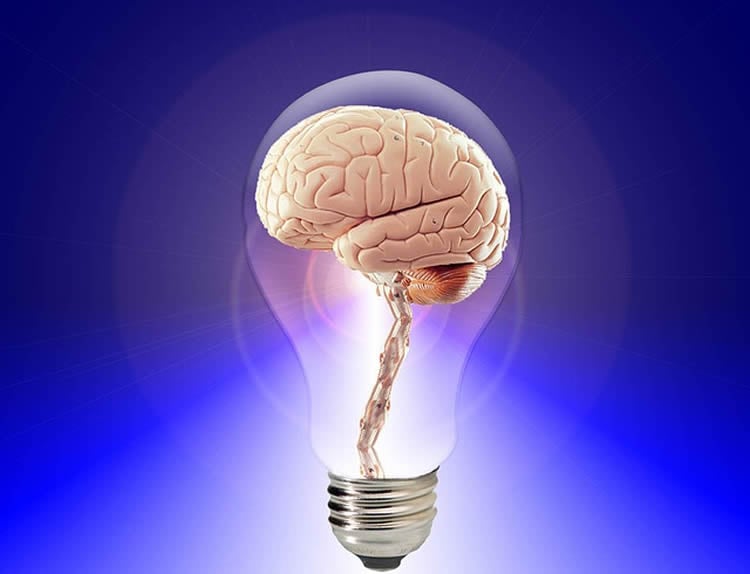Researchers at The University of Queensland have made a key step that could eventually offer hope for stroke survivors and other people with brain damage.
The international study, led by researchers at UQ, could help explain a debilitating neurological condition known as unilateral spatial neglect, which commonly occurs after a stroke causing damage to the right side of the brain.
People with this condition become unaware of the left side of their sensory world, making everyday tasks such as eating and dressing almost impossible to perform.
ARC Discovery Early Career Research Fellow Dr Marta Garrido from UQ’s Queensland Brain Institute (QBI) said this lack of awareness on the left side, might be caused by an uneven brain network that involves interactions between different brain regions.
“Patients with spatial neglect are impaired in attending to sensory information on the left or the right side of space, but this inability is a lot stronger for objects coming from the left,” she said.

“This research has enabled us to establish what happens in a healthy brain, so that we can then further understand exactly what goes on in the brain of someone who is experiencing spatial neglect.”
QBI co-investigator and ARC Australian Laureate Fellow Professor Jason Mattingley said the human brain performed many functions in an uneven way.
“We already know that in a healthy brain even basic perception can be lopsided. For example, when we look at others’ faces we tend to focus more on the left than the right side,” he said.
“Research like this helps us take a key step in understanding some of the puzzling symptoms observed in people following brain damage.”
The researchers at QBI collaborated with UQ’s School of Psychology, and colleagues from Aarhus University in Denmark, and University College London in the UK.
The study involved recording electrical activity in the brains of healthy adult volunteers using electroencephalography (EEG) while listening to sequences of sounds from the left, right or centre.
The next step for the researchers will be to study how people with brain damage use the left and right sides of the brain when perceiving visual objects and sounds.
Contact: Mikaeli Costello – University of Queensland
Source: University of Queensland press release
Image Source: The image is credited to PublicDomainPictures and is in the public domain
Original Research: Full open access research for “Effective Connectivity Reveals Right-Hemisphere Dominance in Audiospatial Perception: Implications for Models of Spatial Neglect” by Martin J. Dietz, Karl J. Friston, Jason B. Mattingley, Andreas Roepstorff, and Marta I. Garrido in Journal of Neuroscience. Published online April 2 2014 doi:10.1523/JNEUROSCI.3765-13.2014
Effective Connectivity Reveals Right-Hemisphere Dominance in Audiospatial Perception: Implications for Models of Spatial Neglect
Detecting the location of salient sounds in the environment rests on the brain’s ability to use differences in sounds arriving at both ears. Functional neuroimaging studies in humans indicate that the left and right auditory hemispaces are coded asymmetrically, with a rightward attentional bias that reflects spatial attention in vision. Neuropsychological observations in patients with spatial neglect have led to the formulation of two competing models: the orientation bias and right-hemisphere dominance models. The orientation bias model posits a symmetrical mapping between one side of the sensorium and the contralateral hemisphere, with mutual inhibition of the ipsilateral hemisphere. The right-hemisphere dominance model introduces a functional asymmetry in the brain’s coding of space: the left hemisphere represents the right side, whereas the right hemisphere represents both sides of the sensorium. We used Dynamic Causal Modeling of effective connectivity and Bayesian model comparison to adjudicate between these alternative network architectures, based on human electroencephalographic data acquired during an auditory location oddball paradigm. Our results support a hemispheric asymmetry in a frontoparietal network that conforms to the right-hemisphere dominance model. We show that, within this frontoparietal network, forward connectivity increases selectively in the hemisphere contralateral to the side of sensory stimulation. We interpret this finding in light of hierarchical predictive coding as a selective increase in attentional gain, which is mediated by feedforward connections that carry precision-weighted prediction errors during perceptual inference. This finding supports the disconnection hypothesis of unilateral neglect and has implications for theories of its etiology.
“Effective Connectivity Reveals Right-Hemisphere Dominance in Audiospatial Perception: Implications for Models of Spatial Neglect” by Martin J. Dietz, Karl J. Friston, Jason B. Mattingley, Andreas Roepstorff, and Marta I. Garrido in Journal of Neuroscience, April 2 2014 doi:10.1523/JNEUROSCI.3765-13.2014.






